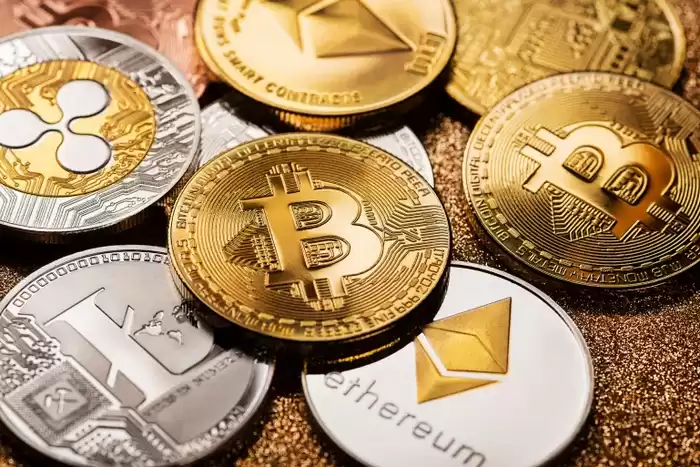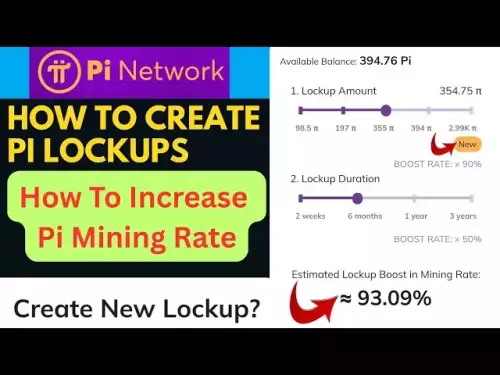-
 bitcoin
bitcoin $114779.865156 USD
2.30% -
 ethereum
ethereum $4226.519789 USD
2.39% -
 tether
tether $1.000545 USD
0.04% -
 xrp
xrp $2.890223 USD
0.92% -
 bnb
bnb $1030.029301 USD
2.95% -
 solana
solana $212.824944 USD
1.69% -
 usd-coin
usd-coin $0.999757 USD
0.01% -
 dogecoin
dogecoin $0.234961 USD
-0.27% -
 tron
tron $0.337174 USD
0.42% -
 cardano
cardano $0.804783 USD
0.09% -
 hyperliquid
hyperliquid $45.748770 USD
-2.85% -
 chainlink
chainlink $21.699170 USD
0.82% -
 ethena-usde
ethena-usde $1.001452 USD
0.08% -
 avalanche
avalanche $30.237800 USD
1.14% -
 stellar
stellar $0.372604 USD
1.52%
What Happens if You Set Gwei Too Low?
If the gas price is set too low, transactions may experience delays, failures, missed opportunities, increased costs, and reduced network security due to delayed processing.
Oct 27, 2024 at 09:56 pm

What Happens if You Set Gwei Too Low?
When sending a transaction on the Ethereum network, users have the option to set a gas price, which is measured in gwei. This price determines how much the user is willing to pay for the transaction to be processed. If the gas price is set too low, the transaction may not be processed at all.
Here are the potential consequences of setting the gwei too low:
1. Transaction Delay or Failure:- Transactions with low gas prices are placed in a queue until a miner is willing to process them at that price. If the network is congested, this can lead to significant delays or even transaction failures.
- Miners prioritize transactions with higher gas prices, so transactions with low gas prices have a higher chance of being dropped or ignored. This can result in failed transactions, which can be frustrating and waste time and resources.
- For time-sensitive transactions, such as purchasing non-fungible tokens (NFTs) or participating in decentralized finance (DeFi) activities, setting the gwei too low can mean missing out on important opportunities due to delayed or failed transactions.
- If a transaction with a low gas price is eventually processed, the user may end up paying more in gas fees than if they had set a higher gas price initially. This is because miners have the ability to adjust the gas price of pending transactions in order to maximize their profits.
- Miners are incentivized to process transactions with high gas prices, so setting the gwei too low can reduce the overall security of the Ethereum network. This is because it makes it more likely that malicious actors can submit transactions that are prioritized by miners, potentially compromising the integrity of the network.
Conclusion
Setting the gwei too low when sending an Ethereum transaction can have negative consequences, including delayed or failed transactions, missed opportunities, increased transaction costs, and reduced network security. Therefore, it is important to carefully consider the appropriate gas price to ensure timely and successful transaction processing.
Disclaimer:info@kdj.com
The information provided is not trading advice. kdj.com does not assume any responsibility for any investments made based on the information provided in this article. Cryptocurrencies are highly volatile and it is highly recommended that you invest with caution after thorough research!
If you believe that the content used on this website infringes your copyright, please contact us immediately (info@kdj.com) and we will delete it promptly.
- Meme Coins, October 2025: Best Buys for the Savvy Crypto Investor
- 2025-09-30 12:25:14
- Bitcoin ETF Net Flows: Fueling Developers and Shaping Markets
- 2025-09-30 12:25:14
- Algorand (ALGO) and Proof-of-Stake: Is This the Sleeping Giant?
- 2025-09-30 12:30:01
- QuantNet, Tokenized Money, and Digital Assets: A New Era for Banking
- 2025-09-30 12:45:12
- Rabby Wallet, Statistics, and 2025 Trends: What's the Buzz?
- 2025-09-30 12:30:01
- BullZilla: Meme Coin Primed for Market Takeover?
- 2025-09-30 12:30:01
Related knowledge

Practical parameter settings for a Bitcoin multi-timeframe moving average system
Sep 18,2025 at 10:54pm
Optimizing Timeframe Combinations for Bitcoin Trading1. Selecting appropriate timeframes is crucial when building a multi-timeframe moving average sys...

How can I filter out false breakouts in Dogecoin high-frequency trading?
Sep 22,2025 at 01:00am
Understanding False Breakouts in Dogecoin Trading1. A false breakout occurs when Dogecoin's price appears to move beyond a defined support or resistan...

Techniques for identifying tops and bottoms in the Bitcoin on-chain NVT model
Sep 20,2025 at 07:54pm
Understanding the NVT Model in Bitcoin Analysis1. The Network Value to Transactions (NVT) ratio is often described as the 'P/E ratio' of the cryptocur...

What does the surge in open interest in Bitcoincoin futures mean?
Sep 20,2025 at 11:18pm
Understanding the Surge in Dogecoin Futures Open Interest1. A surge in open interest within Dogecoin futures indicates a growing number of active cont...

How can I use the Ethereum USDT premium to gauge market sentiment?
Sep 18,2025 at 11:55pm
Understanding the Ethereum USDT Premium1. The Ethereum USDT premium refers to the price difference between USDT (Tether) traded on Ethereum-based plat...

What should I do if Ethereum staking yields decline?
Sep 20,2025 at 06:18am
Understanding the Causes Behind Declining Ethereum Staking Yields1. The Ethereum network transitioned to a proof-of-stake consensus mechanism with the...

Practical parameter settings for a Bitcoin multi-timeframe moving average system
Sep 18,2025 at 10:54pm
Optimizing Timeframe Combinations for Bitcoin Trading1. Selecting appropriate timeframes is crucial when building a multi-timeframe moving average sys...

How can I filter out false breakouts in Dogecoin high-frequency trading?
Sep 22,2025 at 01:00am
Understanding False Breakouts in Dogecoin Trading1. A false breakout occurs when Dogecoin's price appears to move beyond a defined support or resistan...

Techniques for identifying tops and bottoms in the Bitcoin on-chain NVT model
Sep 20,2025 at 07:54pm
Understanding the NVT Model in Bitcoin Analysis1. The Network Value to Transactions (NVT) ratio is often described as the 'P/E ratio' of the cryptocur...

What does the surge in open interest in Bitcoincoin futures mean?
Sep 20,2025 at 11:18pm
Understanding the Surge in Dogecoin Futures Open Interest1. A surge in open interest within Dogecoin futures indicates a growing number of active cont...

How can I use the Ethereum USDT premium to gauge market sentiment?
Sep 18,2025 at 11:55pm
Understanding the Ethereum USDT Premium1. The Ethereum USDT premium refers to the price difference between USDT (Tether) traded on Ethereum-based plat...

What should I do if Ethereum staking yields decline?
Sep 20,2025 at 06:18am
Understanding the Causes Behind Declining Ethereum Staking Yields1. The Ethereum network transitioned to a proof-of-stake consensus mechanism with the...
See all articles










































































